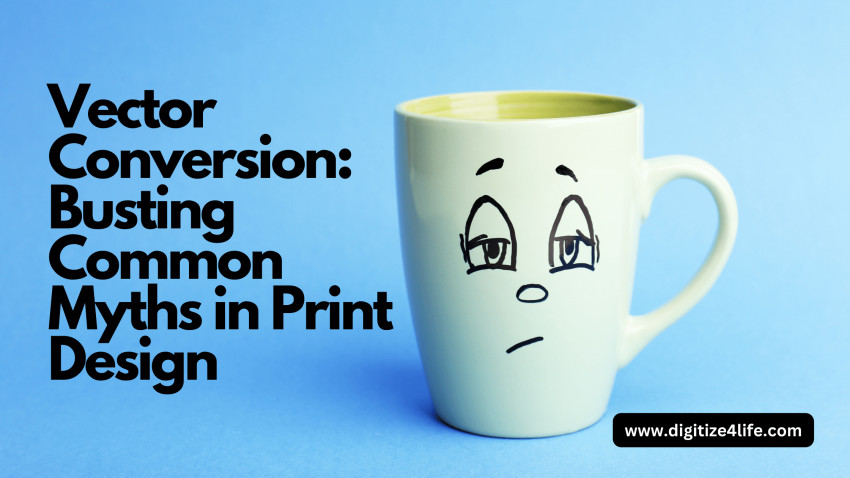
The importance of flawless graphics in the dynamic field of print design cannot be emphasized. Every component — from pictures to logos — is essential to successfully communicating ideas. One area that is frequently misunderstood in the quest for perfection is vector conversion. Together, we will dispel common misconceptions and reveal the reality regarding this important aspect of design.
Myth №1: Converting Vectors Requires a Lot of Work and Time.
Despite what many people think, vector conversion isn’t a mysterious skill only used by master designers. If one has the appropriate instruments and methods, it’s an easy process that anyone can do. Simplified workflows and user-friendly interfaces are features of contemporary software solutions that reduce complexity and time commitment. Efficiency is attainable whether you’re tracing raster images or starting from scratch to create vectors.
Myth №2: Print Design Just Requires Raster Images
Even if raster images have advantages, vectors are superior when scalability is crucial. Raster graphics pixelate and distort when enlarged since their quality is dependent on the screen resolution. Vectors, on the other hand, guarantee sharpness at any scale since they are mathematically defined. The gold standard in print design is vector graphics, whether it’s for a billboard or a business card.
Myth №3: Less Realism and Detail When Converting to Vector
Vector conversion is criticized for sacrificing realism and detail in lieu of scalability. But nothing could be further from the reality than this. Sophisticated vectorization techniques precisely maintain fine details, keeping the spirit of the original artwork. Vectors preserve realism while providing unmatched adaptability, from delicate gradients to complex textures — a tribute to the development of digital artistry.
Myth №4: Printing Cannot Be Done with Vector Formats.
The idea that vector formats cannot be used with printing processes is another widespread misperception. In actuality, vectors provide unparalleled flexibility and fidelity and blend in easily with print procedures. Whether printing in spot color or CMYK, vectors guarantee precise reproduction on a variety of media. Accepting vector formats removes compatibility issues and allows designers to express themselves freely.
Myth №5: Specialized Knowledge Is Needed For Vector Conversion
To truly democratize design, vector conversion must be debunked as an arcane ability. Although experience increases one’s ability to use vector graphics, it is not a need. With the help of a wealth of resources, tutorials, and intuitive software, vectorization becomes accessible to everybody, including those who have never done it before. All enthusiasts can achieve expertise with enough effort and persistence.
Final Thoughts: Acknowledging the Veracity of Vector Conversion
Vector conversion is an essential component of creativity and functionality in the print design fabric. We reveal its genuine potential as a catalyst for creativity and expression by busting popular myths and misconceptions. Let’s embrace vector graphics’ adaptability, scalability, and fidelity and go beyond their constraints to create enduring works of art that enthrall and inspire.
With the dispersal of false information, a growing number of designers and aficionados set out on a revolutionary journey, redefining print design boundaries through the power of vectors.
Unlock the power of vector conversion now, and watch as your works reach new levels of impact and quality.




